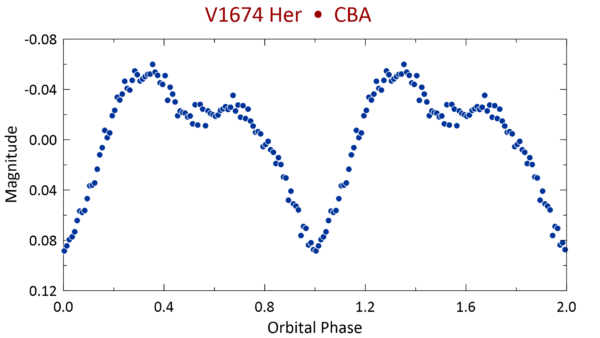The Orbital and Pulse Periods of V1674 Herculis
J. Patterson (Columbia Univ.), M. Epstein-Martin (Columbia Univ.), T. Vanmunster (CBA-Belgium), J. Kemp (Middlebury Coll.), on behalf of the Center for Backyard Astrophysics consortium
We have carried out time-series photometry of V1674 Herculis = Nova Her 2021 with the globally distributed telescopes of the Center for Backyard Astrophysics. During 2021 July 1 – August 10, the star displayed a strong double-humped photometric signal at 0.15302(2) days, and another strong signal at 8.3586(3) minutes. The latter seems consistent with the 8.357 min signal detected in pre-outburst ZTF data by Mroz et al. (ATel 14720), and the 8.4 min X-ray signal reported in outburst by Maccarone et al. (ATel 14776). Writing our two strong signals as Ω and ω, we find weaker but clear detections at ω-Ω and ω-2Ω. This is all standard fare for an intermediate polar (DQ Her star), although there is no precedent for such signals in so bright a star (Mv~0), and so far above quiescence (7 mag). The mean orbital light curve of V1674 Her during 2021 July 1 – August 10 is shown below in Figure 1. The amplitude grew significantly during this interval, when the V-band brightness faded by 2 magnitudes.
Figure 1. The mean orbital light curve of V1674 Her during 2021 July 1 – August 10. The amplitude grew significantly during this interval, when the V-band brightness faded by 2 magnitudes.

